“发光胶体纳米粒子”研讨会
“发光胶体纳米粒子”研讨会
联合主办:发光学及应用国家重点实验室、发光室党支部
中科院长春光机所基础科研处、国际合作处
时间:2017.4.28 地点:长春光机所,发光室五楼大会议室
| 9:00-9:20 | Opening Ceremony Chair: Prof. Dezhen Shen (申德振 研究员) | |||
| Time | Title | Speaker | Affiliation | |
| 9:20-10:10 | Light-Emitting Colloidal Nanostructures | Prof. Andrey L. Rogach | City University of Hong Kong | |
| 10:10-10:50 | Multifunctional Polymer Dots for Imaging and Therapy | Prof. Changfeng Wu 吴长锋 教授 (优青) | Southern University of Science and Technology | |
| 10:50-11:30 | Supramolecular Hybrids of Carbon Dots with Guest Molecules | Prof. Zhigang Xie 谢志刚 教授 (优青) | Changchun Institute of Applied Chemistry, CAS | |
| 11:30-13:30 | Lunch | |||
| 13:30-14:10 | Light-Emitting Devices Based on Colloidal Quantum Dots | Prof. Yu Zhang 张宇 教授 | Jilin University | |
| 14:10-14:50 | Energy migration dynamics in upconversion nanoplatform: from design to bio-application | Prof. Xiaomin Liu 刘晓敏 研究员 | Institute of Optics, Fine Mechanics, and Physics, CAS | |
| 14:50-15:30 | Full-color emissive Carbon Nanodots: synthesis and applications | Prof. Songnan Qu 曲松楠 研究员
| Institute of Optics, Fine Mechanics, and Physics, CAS | |
| 15:30-15:40 | Coffee break | |||
| 15:40-16:10 | Ultrafast Excited State Processes in Carbon Nanodots | Associate Prof. Pengtao Jing 景鹏涛 副研究员 | Institute of Optics, Fine Mechanics, and Physics, CAS | |
| 16:10-16:30 | The influence of Molecular Fluorescence and Carbonization in Citric Acid-Based Carbon Dots | Ms. Yuan Xiong | City University of Hong Kong | |
| 16:30-16:50 | Polymer carbon dots and their photoluminescence mechanism-----molecular state emission and CEE effect | Dr. Yubin Song 宋玉彬 博士 | Jilin University | |
Light-Emitting Colloidal Nanostructures
Andrey L. Rogach
Department of Physics and Materials Science & Centre for Functional Photonics, City University of Hong Kong, Tat Chee Avenue, Kowloon, Hong Kong S.A.R.
Email: andrey.rogach@cityu.edu.hk
In this talk, I will provide an overview of light-emitting colloidal nanostructures synthesized in our labs, which include II-VI quantum dots emitting over the broad visible and near-infrared spectral range; carbon dots; perovskite nanocrystals; and copper clusters. I will highlight their photophysical properties studied by advanced optical spectroscopy techniques, and demonstrate their emerging applications ranging from light-emitting diodes to liquid crystal displays and luminescence nanothermometry.

Andrey L. Rogach is a Chair Professor of Photonics Materials at the Department of Physics and Materials Science, and the Founding Director of the Centre for Functional Photonics at City University of Hong Kong. He received his Ph.D. in chemistry (1995) from the Belarusian State University in Minsk, and worked as a staff scientist at the University of Hamburg (Germany) from 1995 to 2002. From 2002–2009 he was a lead staff scientist at the Ludwig-Maximilians-Universit?t in Munich (Germany), where he completed his habilitation in experimental physics. His research focuses on synthesis, assembly and optical spectroscopy of colloidal semiconductor and metal nanocrystals and their hybrid structures, and their use for energy transfer, light harvesting and light emission. He has published over 300 papers and book contributions in these areas, which have been cited more than 23,000 times so far (h-index 81). His name is on the list of Top 100 Materials Scientists and on the list of Top 20 Authors publishing on nanocrystals in the past decade by Thomson Reuters, ISI Essential Science Indicators. Andrey Rogach is an Associate Editor of ACS Nano, holds honorary appointments at Trinity College Dublin (Ireland), Xi’An Jiaotong University, Jilin University and Peking University (China), and has been a visiting professor at Nanyang Technological University of Singapore in 2013 and 2015.
Multifunctional Polymer Dots for Imaging and Therapy
Prof. Changfeng Wu (吴长锋)
Email: wucf@sustc.edu.cn
优秀青年基金获得者
南方科技大学生物医学工程系
In this presentation, we present several new types of polymer dots (Pdot) for biological imaging and phototherapy. The hydrophobic semiconductor polymers tend to form small, stable and densely-packed Pdots. The large absorption cross section, high fluorescence quantum yields, and good biocompatibility are promising for biological imaging in vitro and in vivo. We showed that the Pdots coated with a cell penetrating peptide had remarkable endocytic uptake efficiency for stem cell labeling as compared to carboxyl Pdots. The Pdot-labeled stem cells can be traced for 15 generations in vitro and tracked over weeks in vivo after tail-vein injection. For PDT applications, incorporation of photosensitizer inside the Pdots can amplify singlet-oxygen generation by efficient energy transfer. We developed Pdot photosensitizers and then systematically characterized the spectroscopic properties, which showed efficient singlet oxygen generation amplified by inter-particle energy transfer. The effectiveness of Pdots as PDT photosensitizer was demonstrated by in vitro assay, which indicate that the Pdots are able to damage cancer cells under low Pdot concentration and light dose. Moreover, the PDT effect of the Pdots was further investigated in vivo with tumor-bearing mice model, and the xenograft tumors were significantly inhibited or eradicated in certain cases.
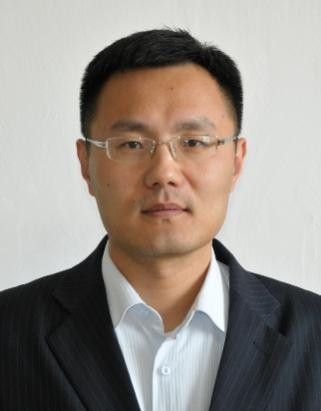
Changfeng Wu completed his Physics PhD in 2004 at Institute of Optics, Fine Mechanics, and Physics, Chinese Academy of Sciences. He earned his PhD in Chemistry at the group of Prof. Jason McNeill from Clemson University in 2008. He then carried out postdoctoral research with Prof. Daniel T. Chiu at University of Washington. He started his independent research at Jilin University in 2012. He is currently a Professor of Biomedical Engineering at Southern University of Science and Technology. His research is focused on the development of fluorescent probes, biosensors, spectroscopic and imaging techniques for biomedical applications. He has published >100 peer-reviewed papers, with more than 5000 SCI citations.
Supramolecular Hybrids of Carbon Dots with Guest Molecules
Prof. Zhigang Xie (谢志刚)
Email: xiez@ciac.ac.cn
研究员、国家优秀青年基金获得者
中国科学院长春应用化学研究所
In this talk, several supramolecular hybrids based on carbon dots will be presented, based on recent works done in Changchun Institute of Applied Chemistry, Chinese Academy of Science. Carbon nanomaterials have emerged as important building blocks for a wide range of applications in electronics, photonics, sensors, renewable energy, and biomedicine. They possess various microstructures, including fullerenes, carbon nanotubes, nanodiamonds, graphene, and carbon dots (CDs). Among these carbon nanomaterials, CDs have attracted tremendous interest for applications in biology due to their excellent water solubility, favorable biocompatibility, high photostability, facile synthesis and functionalization, and good cell permeability. Up to now, CDs have demonstrated favourable performance in fluorescent probes, analytical investigations, drug delivery, and pH responsive materials. Whatever the synthesis route employed, the sizes of CDs typically range from 1–10 nm with different numbers of stacked graphene layers, and CDs have similar properties to graphene. So we anticipate that CDs could form the supramolecular hybrids with drugs, organic dyes and proteins.
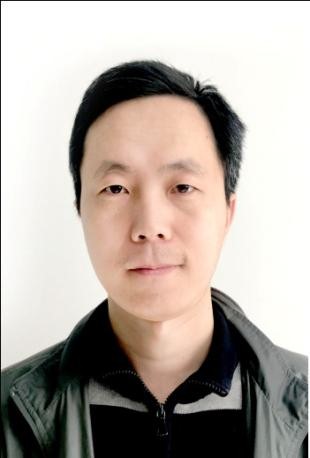
Dr. Zhigang Xie is a full professor in Changchun Institute of Applied Chemistry (CIAC), Chinese Academy of Science (CAS). Dr Xie obtained his BS degree in chemistry from Henan University in 2002 and his PhD degree in polymer chemistry from CIAC in 2007. Before joining CIAC in 2012, he worked as a postdoctoral fellow at Polytechnic University at Brooklyn and the University of North Carolina at Chapel Hill. His research focuses on polymeric nanomedicines and fluorescent nanoparticles. Prof. Xie has published more 80 papers in international scientific journals, including JACS, Adv. Mater., ACS Nano, Chem. Mater., and Chem. Sci.
Light-Emitting Devices Based on Colloidal Quantum Dots
Prf. Yu Zhang (张宇 教授)
Email: yuzhang@jlu.edu.cn
吉林大学集成光电子学国家重点实验室,电子科学与工程学院
In this talk, we focus on the three issues of perovskite QD-based LEDs including stability, efficiency and toxicity. (1) Perovskite QD/silica composites and gels with excellent PL properties of narrow line-width and high PL QY were synthesized by slowly hydrolyzing the organosilicon capping agent in situ, which showed the significantly improved air stability; (2) We demonstrated that through a simple post treatment to the perovskite QDs with polyethylenimine, the surface defects of the perovskite QDs could be well passivated, leading to great enhancements on their absolute photoluminescence quantum yield and photoluminescence lifetime. Through using a well-passivated perovskite QD film and optimizing the charge balance, we achieved an electroluminescence LED with an external quantum efficiency (EQE) of 7.2 %, which is the highest value reported among perovskite QD-LEDs so far; (3) The highly luminescent Pb-free QDs were prepared and demonstrated an efficient electroluminescence LED.

Dr. Yu Zhang, received the B.S. and Ph.D. degrees in electronics from Jilin University, China, in 2005 and 2010, respectively. He worked as a postdoctoral researcher in Pennsylvania State University, U.S., from 2010 to 2011, and then as “Hong Kong Scholar” in Department of Material Science and Physics, City University of Hong Kong, from 2013 to 2014. In 2015, he was promoted as a full professor in Jilin University, China. His research interests have been focused on colloidal semiconductor quantum dot-based optoelectronic devices: (i) high efficient quantum dot-based light emitting diodes for display and solid state lighting, and (ii) environmental-friendly and nontoxic quantum dots and their application of optoelectronic devices. He has published over 70 scientific papers in the above fields, which have been cited more than 1700 times according to ISI search report.
Energy migration dynamics in upconversion nanoplatform: from design to
bio-application
Prof. Xiaomin Liu(刘晓敏 研究员)
Email: xmliu@ciomp.ac.cn
中国科学院长春光学精密机械与物理研究所,发光学及应用国家重点实验室
In this presentation, we started from a clear quantitative image of how excitation energy migrates and how it contributes to upconversion luminescence, especially how it affects the time behavior of the upconversion luminescence. Based on the understanding of the excitation energy migration dynamics, several strategies were then introduced to relieve or eliminate the energy migration loss, aiming at significantly enhancement of upconversion efficiency. Finally, various bio-applications, like photodynamic therapy, intracellular pH detection, immunoassay in whole blood, etc., were demonstrated to prove its high efficiency.
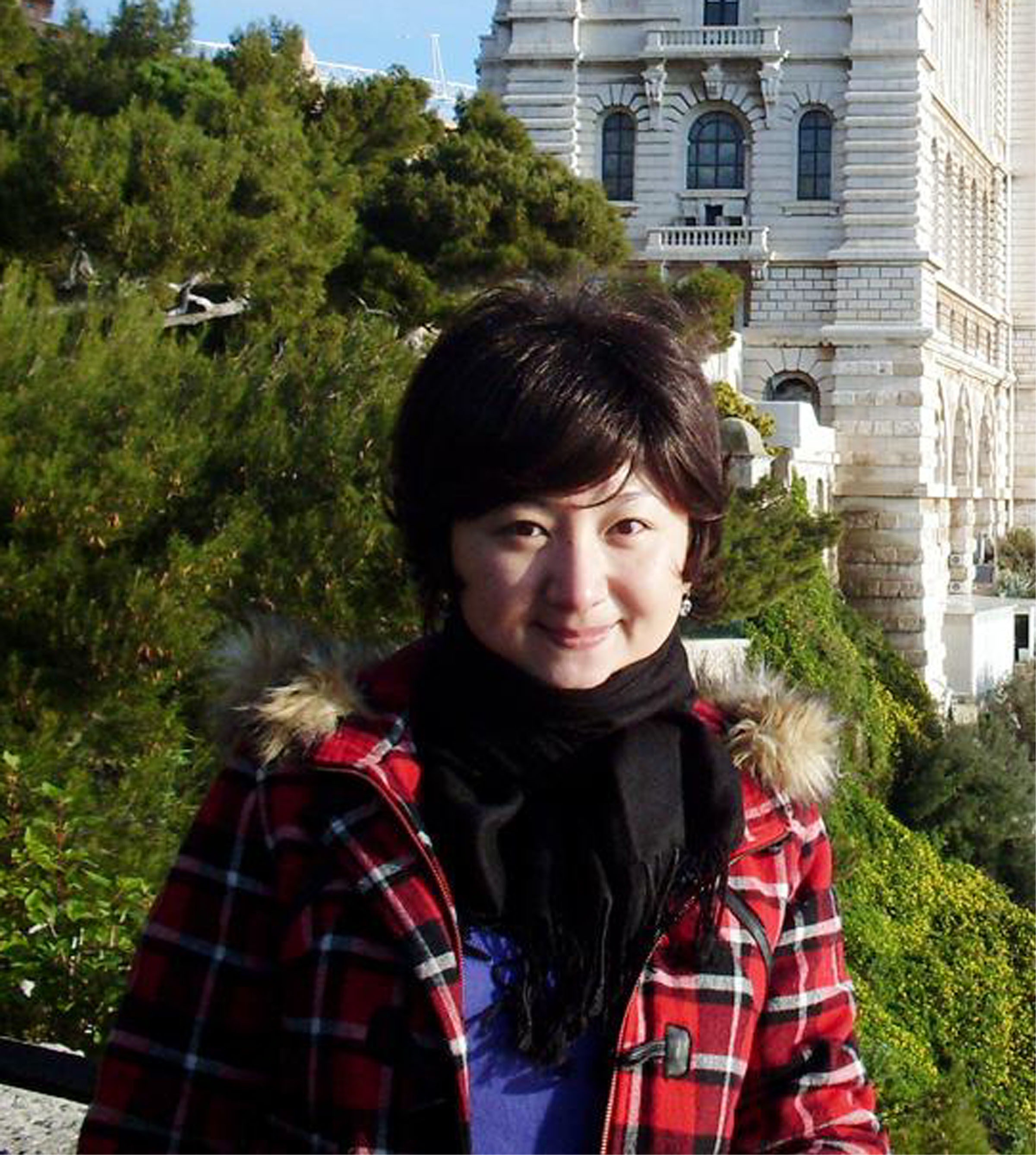
Xiaomin Liu received her BSc in chemistry (2003), and PhD (2008) in inorganic chemistry from Jilin University, China, with Prof. Shouhua Feng. Subsequently she joined the group of Prof. Xianggui Kong at Changchun Institute of Optics, Fine Mechanics and Physics, Chinese Academy of Sciences, as a research assistant and was promoted to professor in 2016. In 2010 and 2013 she went to the University of Amsterdam and Leiden University as research fellow. Her current research interests are lanthanide-based nanomaterials and functionalization. She has published more than 55 peer-reviewed papers in international journals, including Chem. Soc. Rev., ACS nano, Biomaterials, Chem. Comm., Nanoscale. J. Mater. Chem. B.etc.
Full-color emissive Carbon Nanodots: synthesis and applications
Prof. Songnan Qu(曲松楠 研究员)
Email: qusn@ciomp.ac.cn
中国科学院长春光学精密机械与物理研究所,发光学及应用国家重点实验室
Luminescent carbon nanodots (CDots) as a new type of luminescent material have attracted increasingly attention because they have distinct merits such as low toxic, good biocompatibility, high photostability and facile preparation. However, the luminescence mechanism of CDots is still vague due to numerous starting materials, methods and unclear structures. There are two main obstacles for the development of CDots, that are (1) controlling the luminescent properties of CDots to achieve full-color controllable bandgap emission; (2) realizing strong solid-state luminescence with high PLQYs and high CDot-loading fraction. In this talk, I present our recent five years works on CDots. We achieve full-color highly luminescent CDots only using citric acid and urea. We also prepare full-color and white light strong luminescent CDot-based phosphors with high PLQYs (>30%) and high CDot-loading fraction. Using these CDot-based phosphors, full-color and white light emissive CDot-based LEDs are also prepared. In addition, we develop “supra-CDots” systems to modulate the optical properties of CDots through self-assembly to expand new applications, such as water-jet luminescent printing and near-infrared (NIR) range high photothermal conversion (>50%).
Dr. Songnan Qu is a full Professor in State Key Laboratory of Luminescence and Applications at Changchun Institute of Optics, Fine Mechanics and Physics, Chinese Academy of Sciences. He achieved his Ph.D. and B.S. from Jilin University in materials physics and chemistryat 2000 and 2009 respectively. His research interests focus on development and applications of carbon nanodots. Dr. Qu has published more 60 papers in international scientific journals, including Adv. Mater., Angew. Chem. Int. Ed., Adv. Funct. Mater. Light: Sci. Appl., Chem. Mater., and Small, with more than 1100 SCI citations..
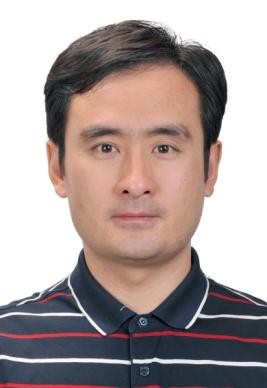
Ultrafast Excited State Processes in Carbon Nanodots
Dr. Pengtao Jing (景鹏涛 副研究员)
Email:jpt18@163.com
中国科学院长春光学精密机械与物理研究所,发光学及应用国家重点实验室
In this talk, we present our recent ultrafast spectroscopic studies of anisotropic relaxation and hot electron cooling processes in carbon nanodots (CDots). (1) Because of the origin of anisotropic photoluminescence (PL) in CDots is unclear, which greatly hampers precisely controlling their luminescence properties and relevant applications. We studied the anisotropic PL in hetero-atom doped CDots using polarization dependent femtosecond transient absorption spectroscopy and computational simulation. The results reveal the anisotropic PL of CDots originates from n-π* transition of a hybrid state, in which the highest occupied molecular orbital is localized at dopant atoms and the lowest unoccupied molecular orbital is delocalized over graphene-like domain. (2) Non-luminescent CDots shows potential application in photothermal therapy (PTT). The dynamics of hot electron in CDots was investigated using femtosecond transient absorption spectroscopy. The electron-optical-phonon and electron-acoustic-phonon scatterings in CDots were observed in a few 100 fs and a few picosecond time scales, respectively.
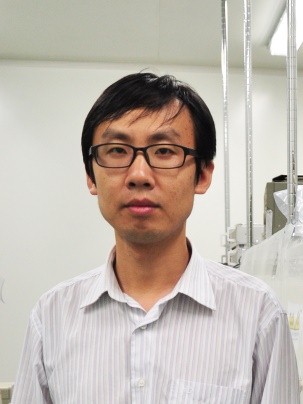
Dr. Pengtao Jing is associate professor in Changchun Institute of Optics, Fine Mechanics and Physics (CIOMP), Chinese Academy of Sciences. Dr. Jing obtained his BS degree in material chemistry from Changchun University of Science and Technology in 2006 and his PhD degree in condensed matter physics from CIOMP in 2011. He joined State Key Laboratory of Luminescence and Applications in 2011. He worked as a visiting scholar in Institute of Physics, University of Tsukuba, Japan, from 2011 to 2012, and then as a research fellow of Holland Research School of Molecular Sciences (HRSMS) in Van’t Hoff Institute for Molecular Sciences, University of Amsterdam, The Netherlands, in 2015. His research focuses on the ultrafast spectroscopic study of carbon and semiconductor nanomaterials. He has published >40 papers in international scientific journals, with more than 600 SCI citations.
The influence of Molecular Fluorescence and Carbonization in Citric Acid-Based Carbon Dots
Ms. Yuan Xiong (熊媛)
Department of Physics and Materials Science & Centre for Functional Photonics, City University of Hong Kong, Tat Chee Avenue, Kowloon, Hong Kong S.A.R.
Email: yuanxiong3-c@my.cityu.edu.hk
The origin of strong blue emission in citric acid-based CDs has recently been explained by the presence of derivatives of citrazinic acid, a molecular fluorophore from the family of pyridines. In this regard, we have examined the potential impact of molecular fluorophores on the optical properties of three different species of CDs, based on citric acid and three nitrogen precursors: ethylenediamine (e-CDs), hexamethylenetetramine (h-CDs), and triethanolamine (t-CDs). We pointed out the differences in the reactivities of different molecular precursors, resulting in a variety of simultaneous chemical reactions under hydrothermal conditions. After discussing the synthesis conditions. We then focus on the optical properties of the three CD samples and systematically compare them to pure citrazinic acid. With an emphasis on excitation-dependent and time-resolved PL spectroscopy, we derive the influence of molecular fluorophores on the properties of CDs and confirm their presence in e-CD and h-CDs. Moreover, we derive the influence of the carbonized network by comparing e-CDs to species with higher and lower degree of carbonization. After examining the general structural and optical properties, we focus on their stability upon photobleaching under UV irradiation, in order to gain insight on the important question whether molecular fluorophores are free in solution, attached to, or embedded into the graphitic carbon nanoparticles.
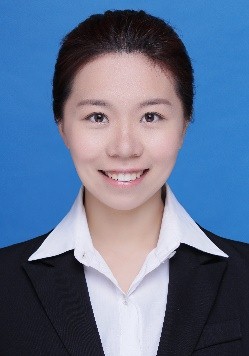
Yuan Xiong obtained her B.E. in 2015 from Hunan University of Science and Technology (Xiang tan, China) in Inorganic Non-Metallic Materials Engineering and her Master’s degree with excellence award at City University of Hong Kong (Hong Kong SAR) from 2015 to 2016 in Materials Science. Currently, she is a year one PhD student under the supervision of Prof. Dr. Andrey L. Rogach in the Department of Physics and Materials Science at City University of Hong Kong. Her research focuses on the synthesis, optical properties and applications of carbon dots.
| 附件下载: |
0431-86176315 0431-84627031 skla@ciomp.ac.cn 130033 长春经济技术开发区东南湖大路3888号






